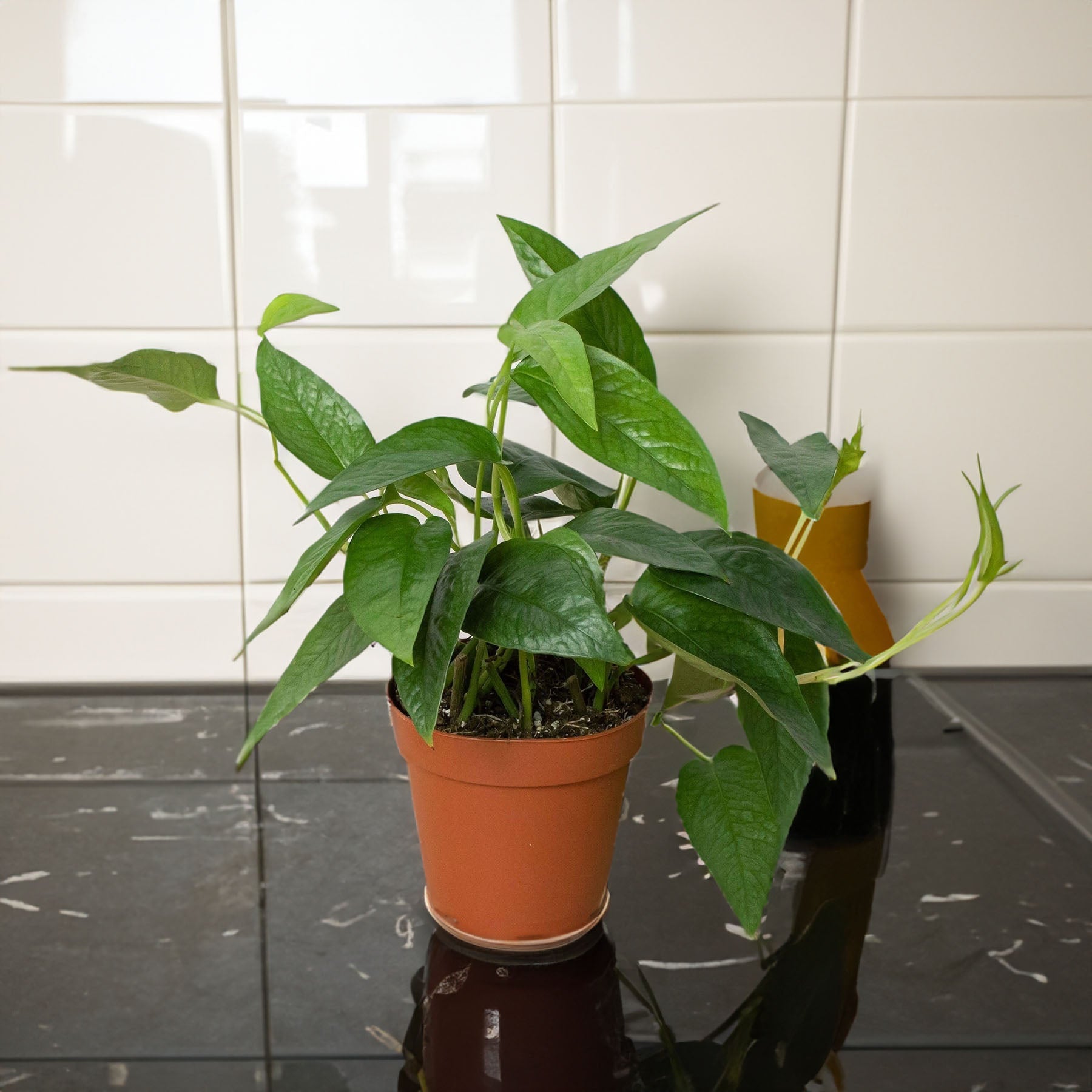Introduction
Welcome to the ultimate Pothos Cebu Blue Plant Care Guide! Whether you're a seasoned plant enthusiast or a beginner with a green thumb, this article will be your go-to resource for nurturing and maintaining the captivating Pothos Cebu Blue plant. With its striking blue-green foliage and easy-care nature, this plant has become a favorite among indoor gardeners.
In this guide, we'll delve into the world of Pothos Cebu Blue, exploring everything from its origins to the best care practices to ensure it thrives in your home. Let's embark on this green journey together and create a thriving oasis with our leafy companion.

Pothos Cebu Blue: A Closer Look
To start, let's familiarize ourselves with the Pothos Cebu Blue plant. Also known as Epipremnum aureum 'Cebu,' this unique variety of Pothos stands out due to its distinctive blue-green leaves. Native to the Solomon Islands, the Pothos Cebu Blue belongs to the Araceae family and is a popular choice for indoor decoration.
1. Origin and Characteristics
The Pothos Cebu Blue plant originates from the tropical rainforests of the Solomon Islands, where it thrives in the dappled sunlight beneath the forest canopy. Its heart-shaped leaves display mesmerizing shades of green with a prominent blue hue, adding an enchanting touch to any indoor space.
2. Benefits of Having Pothos Cebu Blue
-
Air Purification: Pothos Cebu Blue is an excellent air purifier, removing harmful pollutants from the air and creating a healthier living environment.
-
Low Maintenance: Perfect for beginners, this plant is easy to care for and can tolerate some neglect, making it an ideal choice for busy individuals.
-
Aesthetic Appeal: The unique blue-green foliage adds a pop of color and life to your home, brightening up any corner or shelf.
3. Ideal Growing Conditions

To ensure your Pothos Cebu Blue thrives, it's crucial to provide the right growing conditions:
-
Light: This plant prefers bright, indirect light, but it can also tolerate low light conditions, making it versatile for various locations in your home.
-
Temperature: Average room temperatures ranging from 65°F to 85°F (18°C to 29°C) are ideal for the Pothos Cebu Blue.
-
Humidity: Maintain moderate to high humidity levels by misting the plant regularly or using a humidity tray.

4. Soil and Potting
-
Well-Draining Soil: Use a well-draining potting mix, preferably a blend of peat moss, perlite, and vermiculite, to ensure proper water drainage and prevent root rot.
-
Choosing the Right Pot: Select a pot that has drainage holes to avoid waterlogging, as Pothos Cebu Blue prefers slightly moist but not waterlogged soil.

5. Watering Tips
-
Moderate Watering: Water the plant when the top inch of the soil feels dry to the touch. Avoid overwatering, as it can lead to root rot.
-
Water Quality: Use room-temperature water to prevent shocking the plant's roots.

6. Pruning and Propagation
-
Pruning: Regularly trim dead or yellowing leaves to encourage new growth and maintain a neat appearance.
-
Propagation: Pothos Cebu Blue can be propagated through stem cuttings placed in water or directly in the soil.

7. Fertilization
-
Balanced Fertilizer: Feed the plant with a balanced liquid fertilizer every two to four weeks during the growing season (spring and summer).
-
Avoid Over-Fertilization: Too much fertilizer can lead to excess salts in the soil, causing harm to the plant.
8. Common Pests and Problems
-
Spider Mites: These tiny pests can infest the plant, causing yellow speckles on the leaves. Use insecticidal soap to eliminate them.
-
Root Rot: Overwatering or poor drainage can lead to root rot. Ensure proper watering and use well-draining soil to prevent this issue.
9. Decorating with Pothos Cebu Blue
-
Hanging Baskets: Utilize hanging baskets to showcase the Pothos Cebu Blue's cascading foliage, creating a beautiful display.
-
Shelf Decor: Place potted Pothos Cebu Blue plants on shelves or bookcases to add a touch of green to your home decor.
Frequently Asked Questions (FAQs)
Q: How often should I water my Pothos Cebu Blue plant?
A: Water your Pothos Cebu Blue when the top inch of the soil feels dry to the touch. It's important not to overwater, as this can lead to root rot.
Q: Can I place my Pothos Cebu Blue in direct sunlight?
A: While Pothos Cebu Blue can tolerate some direct sunlight, it prefers bright, indirect light. Too much direct sunlight may scorch its leaves.
Q: How do I propagate Pothos Cebu Blue?
A: Propagate Pothos Cebu Blue through stem cuttings. Simply cut a healthy stem below a node and place it in water or directly in well-draining soil.
Q: Is Pothos Cebu Blue pet-friendly?
A: While Pothos Cebu Blue is generally considered non-toxic to pets, it's best to keep it out of reach to prevent any accidental ingestion.
Q: How do I increase humidity for my Pothos Cebu Blue?
A: Increase humidity by misting the plant regularly or placing it on a humidity tray filled with water and pebbles.
Q: Can I fertilize my Pothos Cebu Blue during the winter?
A: It's best to avoid fertilizing during the winter months when the plant's growth slows down. Resume fertilization in the spring and summer.
Conclusion
Congratulations! You've now mastered the art of caring for the captivating Pothos Cebu Blue plant. With its low-maintenance nature and stunning blue-green foliage, this green companion will thrive under your nurturing care. Remember to provide it with the right amount of light, water, and love, and you'll enjoy a flourishing indoor oasis.
So, go ahead and bring the Pothos Cebu Blue into your home, adding a touch of nature's beauty to your surroundings. Embrace the joy of plant parenthood and watch as your leafy friend enhances your living space with its vibrant charm.


